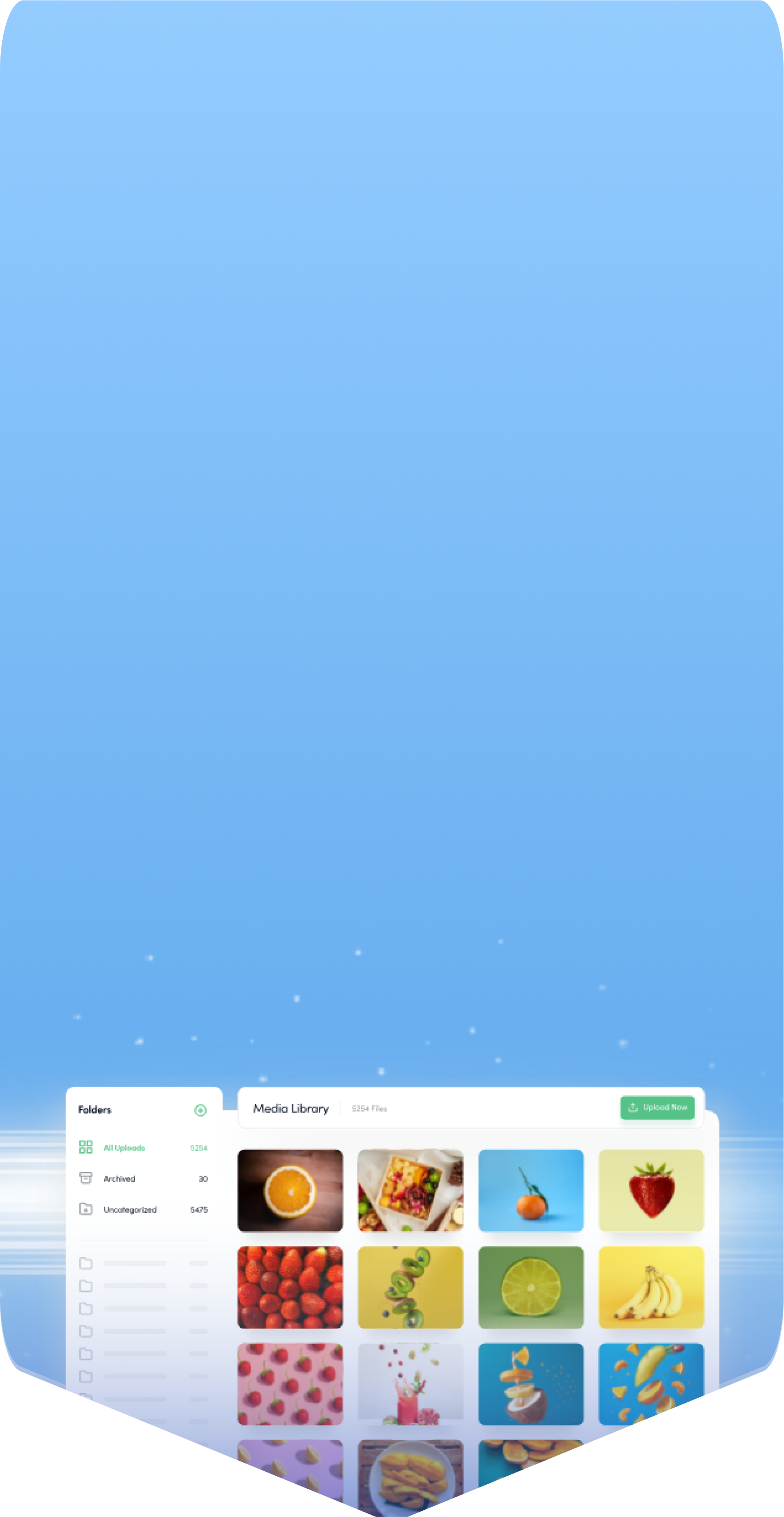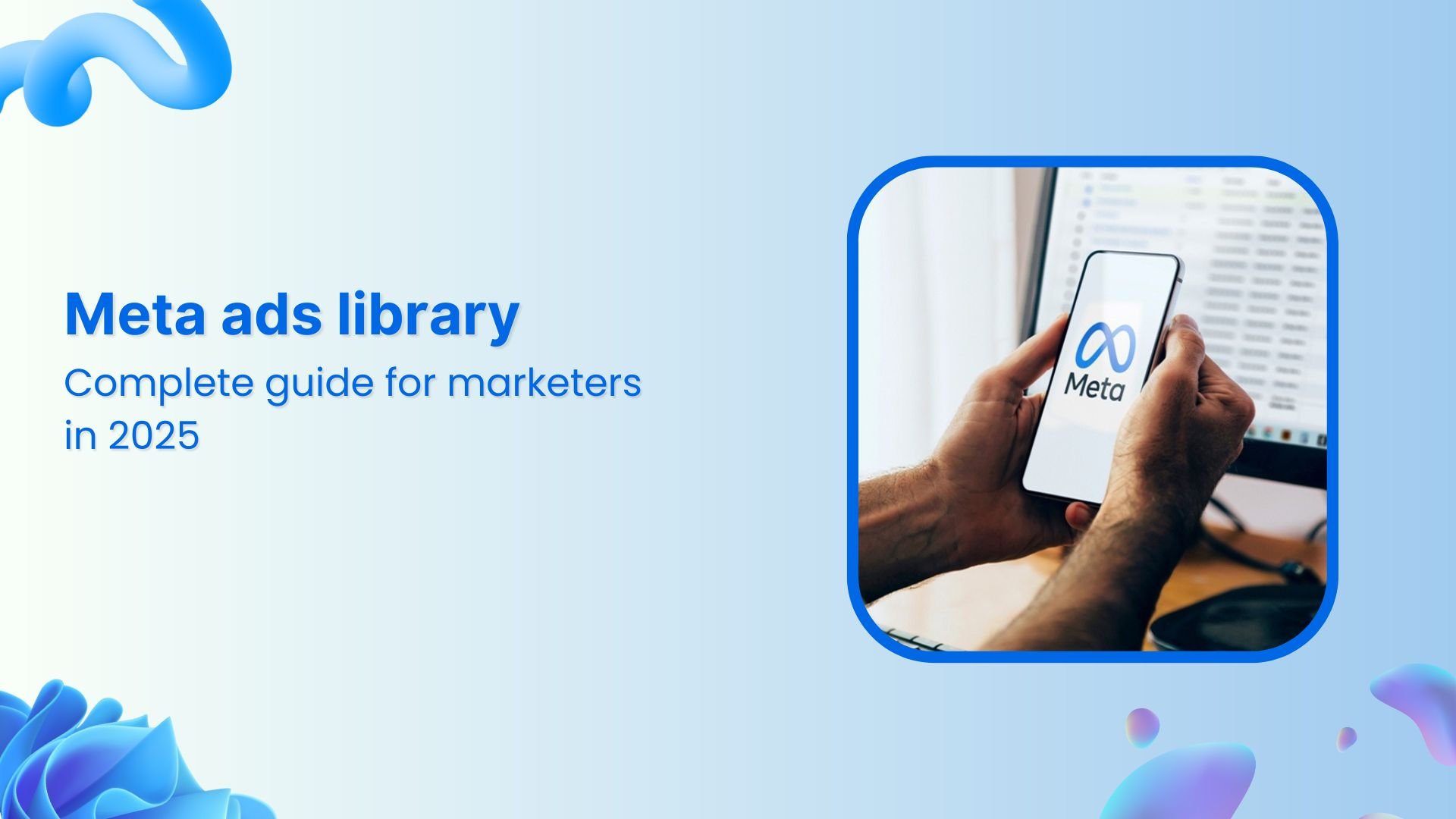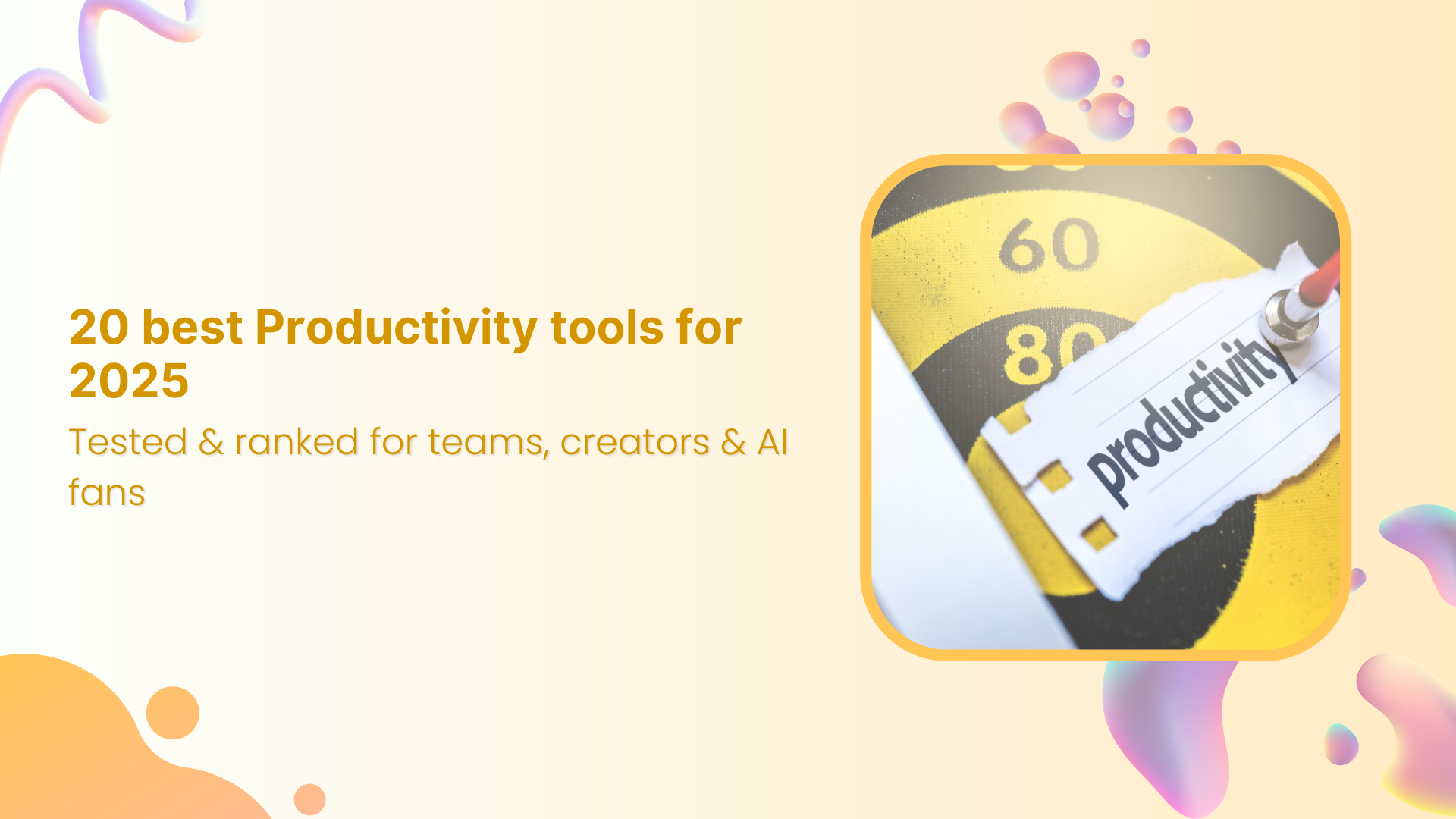Bulk-generate & schedule posts in seconds with Smart Scheduling. Try now!
How To Write A Client Winning Social Media Proposal

Struggling with creating a social media proposal that gets your prospective client to say yes right away?
Essentially, anyone can write a proposal. But creating a client-converting social strategy proposal takes some work, starting with taking the time to understand your prospect’s business.
So in this guide, let’s walk you through how to write a social media proposal and what to include in it. We’ll also list out all the research you need to do before you get to work.
Let’s get started.
What is a Social Media Proposal?
A social media proposal is a document you share with a prospective client summarizing how you plan to achieve their social media goals. This includes the activity timeline you’ll follow, the scope of work, and the pricing.
In short, a social media proposal is a business proposal. Except, it outlines plans for your client’s social media growth.
But hang on a second: why do you need a social media strategy proposal again?
For one, it lays out the A to Z of the project, including the amount of work you’d put in and why, the KPIs you’d track, and the results you’ll drive. This brings you and your client on the same page, which saves both parties from miscommunication and misunderstandings down the line.
And, two, you need a social media marketing proposal to stand out against competitors. Essentially, it’s typical of prospects to reach out to not just one but 2-3 agencies at a time when looking for help.
Must Read: How to Start a Social Media Marketing Agency
So in their interactions with every agency that they talk to, they evaluate how well the agency understands their goals and requirements, how equipped it is to deliver results, and how convincing their suggested strategies are.
A social media proposal answers all of these questions. And the better your social strategy document answers your clients’ questions, the more likely it is to win them.
In short, the social media strategy proposal that you create needs to:
- Answer all the questions a prospective client has in their mind
- Speak the client’s language and suggests strategies backed with social proof to convince them
It’s only then that your proposal will stand out against other agencies clients reach out to and win you, clients.
So how do you write a social media proposal that wins clients over? Let’s start answering this by first looking at the legwork you need to put in before writing your proposal.
What do you need to know before writing your social media proposal?
Keep in mind: you don’t just sit on your desk and tap away solutions you think will work.
Instead, start with research. The more research you do, the stronger your grip on your clients’ social profiles and the more relevant solutions you can pitch.
In fact, “thorough research” is the two-word answer to how do you pitch a social media strategy that converts.
With that, let’s run you through all the research work that goes into the pre-proposal writing stage:
1. Learn about your prospect’s business and social media goals
It’s essential you get the answer to this in your client discovery call.
Ask your client what goals they’ve been pursuing with their social media strategy. And, if they’re new to social, what possible goals do they have in mind – you might want to prompt them here with suggestions.
As you unearth the answers, make sure you learn about the prospect’s “why?” For example, why they’ve been following a certain goal. Why they think that goal is important for them, and so on.
You’ll also want to learn about your prospects’ business. Ideally, do some research – Google and LinkedIn searches, for instance. This way, you can get a brief idea of what the business is about, the people they likely serve, what product/service they offer, and similar.
But why bother with this preliminary research and discovery call? So you can come to grips with your client’s business, their offering and unique selling point (USP), and their goals, expectations, and aspirations from social media.
When writing your social media marketing proposal, all this information helps you create a highly-relevant document that convinces clients to convert by showing them how well you understand their needs.
2. Understand your prospect’s audience
One another thing that you need to learn on your discovery and side research (and one that deserves a separate mention) – your prospect’s target audience.
This bit of research is crucial for framing suggestions that’ll resonate with the prospect’s audience.
Not to mention, a strong grip on the client’s audience will help you beyond writing a winning social media strategy. In fact, it’ll help you create more audience-resonating social media content. Plus, you can pick a posting schedule based on the audience and work out an engagement plan as well.
3. Identify and research your prospect’s competition
It helps to ask the prospect about their competitors too.
Before or after the discovery call, research the industry the prospect is in. This can tell you the industry’s trends, what works and what doesn’t, what the intended audience responds to, and what other competitors are doing.
Once you have a list of competitor names, go ahead and review their social profiles. Find out:
- What posting schedule do they have in place?
- How are they engaging with their target audience?
- What are they doing to share their business’s USP?
- What content are they creating to attract and convert their audience?
- What content formats are they exploring – video, GIFs, carousels, and so on?
Having the answer to all of these questions assists you in proposing a social media plan that’ll help the prospect win more business while standing out from their competitors.
Pro tip: In addition to asking prospects who their competitors are, ask them to share the business social media accounts that inspire them? This will help you understand their aspirations. Plus, you can steal ideas from other industries (where applicable) and suggest those in your social media marketing proposal.
How do you pitch a social media strategy? 3 things to do
With the initial legwork done, here’s more practical work that you need to do as you start to write a high-converting social media strategy proposal.
1. Audit prospect’s social media
For clients who aren’t starting from scratch, budget in time to audit their social presence.
Look for:
✔ How optimized the social media profiles are
✔ The engagement strategy they have in place
✔ What’s working and what’s hindering their growth
✔ The type of content they’re posting and the engagement it’s getting
And while you are at it, identify whether all social channels are contributing to their growth – which ones are doing the best and which ones need the most work.
Don’t forget investing in a social audit here will help you propose an effective, results-driving social media strategy in your proposal.
Together the competitor analysis and social audit will also give you a rough SWOT (strengths, weaknesses, opportunities, and threats) analysis of the prospects’ socials.
2. Identify the pain point.
It’s essential you identify not just the prospects’ pain point with social media marketing but also their audience’s struggles.
To begin with, dig into what the prospect is struggling with. Is it the strategy part or its execution that’s holding them back? Or, do they have a poor grip on growing social media altogether?
Figuring out the prospects’ struggle will help you create a proposal that gives them the solution to their struggle.
That said, it’s essential you learn your prospect’s target audience’s struggle as well. Why? Because this is essential fodder for creating social media content that’ll assist in achieving your client’s social media goals.
3. Develop a social media strategy
Now with all the raw material ready and research done, sketch a solution that solves the prospect’s struggles.
To ensure your focus is crystal clear, write down a one-line (or short) solution that’s aimed at solving the prospect’s struggles.
Then, flesh out a social media plan that’ll help in achieving your proposed solution.
Pro tip: In your social media strategy proposal plan, be sure to focus on not only what strategies you intend to undertake but also why. This helps the potential client see the benefit of the strategies for their business growth, which convinces them to convert.
Writing your proposal: What to include in a social media proposal
With all the essential work done, let’s look at the anatomy of a social media proposal, so you know what to add to your document.
Essentially, you need no more than seven sections spread across 11 pages, according to the latest State of Proposals Report (2022).
In a nutshell, the research confirms short proposal documents tend to do well. In fact, their close rate is high as compared to lengthy documents.
So you’ll want to write your proposal first, then edit it for brevity – removing all the unnecessary details and keeping the most persuasive insights that show your expertise and indicate why a client should choose you.
With this in mind, let’s look at the must-have sections for your social media proposal:
1. Introduction
Kick-off with a brief but to the point introduction that summarizes what you learned about the prospect’s requirements and pain points in your research and discovery call.
Make sure you capture the potential client’s pain points very well, as that is what will show your reader how well you understood them. This, in turn, of course, gives a glimpse of your expertise.
One more thing: it’s best to be succinct with introductions. The reason? Short and relevant introductions hook the readers in and encourage them to continue reading. This is exactly what your intro should do.
2. Analysis of client’s needs and objectives
Now dive into the prospect’s goals and objectives from social media.
Again, it’s best to be brief here since your client already knows all of this. The point, however, is to create a narrative for the social media strategy you’ll propose. And that would be impossible to achieve without highlighting the objectives.
Besides, it’s critical to have the objectives down on paper so no one forgets the discussed goals. Plus, having the goals down assists in setting expectations for the results to accomplish.
One good way to keep this section short is to use visuals to convey your message. For example, use icons instead of bullet points to highlight each goal. Then pair each with 1-2 lines about each goal.
Related Read: How to Find Social Media Clients for Your Agency
This way, your proposal document becomes both visually engaging to look at and is easier to read.
3. Social media strategy plan
Next, we have the meaty section of all: the exact plan you have in mind to help the client hit their goals.
Be sure to explain the “why” behind your proposed strategy – putting the spotlight on the benefits of each action plan for the client. Put another way, connect the dots between the plan and the goals.
Want to add a cherry on top? Back your plan with case studies. This slips social proof into the picture, letting potential clients see how you’ve helped past clients with their social media.
The key, however, is to make sure you’re linking to case studies of businesses that’ve had similar problems as the prospect. Ideally, the business should also be in the same industry.
Related Read: Social Media Marketing for Restaurants
4. Scope of work and deliverables
Next up, clearly outline what you’ll do and what deliverables you’ll share, such as social content including visuals, monthly check-ins, and weekly updates.
It’s also essential you share exactly what’s included in the project. For example, you’ll use your social media management tools for the client.
When working on this section, it’s also important you make a note of all the documents you’ll need from the client should they agree to your proposal.
Of course, you don’t have to share them straight away. But creating a handy list of all that’s needed (such as buyer persona, brand voice guidelines, visual identity guidelines, etc.) is a great way to streamline the project.
5. Project milestones and deadlines
With the goals, plan, the scope of work, and deliverables out of the way, work on this section. Be sure to point out what you’ll do and by when. For example, you’ll have the strategy ready by roughly X date.
And to make the strategy easy to execute and digest, it’s crucial you divide it into smaller projects that are marked by milestones. Doing so also assists your client in easily seeing the progress you’re making on their social accounts.
Pro tip: Use supplementary images to explain your timeline (think: a timeline infographic). Why? Because including images in your proposals increases their close rate by up to 72%. Images-packed proposals also close 20% faster.
Finally, highlighting the key performance indicators (KPIs) that you’ll monitor is super-important. These marketing KPIs indicate you’re on your way to success – achieving the pre-defined goals.
6. Budget
For all the work you’ll put in, add a pricing section to your proposal. Again, keep it brief. But make sure you cover the payment channel and payment terms (advance payment, monthly payments, etc.).
Want a proven tip to prevent the client from turning down the proposed plan due to pricing? Use the word “investment” instead of “budget” or “pricing” in this section and for its title.
Psychology confirms the word “investment” changes people’s perspective way of seeing things. So they’re likely to agree to your pricing.
7. Terms of Agreement
Last but not least, don’t forget the legal pointers in case things go sideways with the client.
Have your legal team prepare this section, so everything’s clear. Make sure you include pointers on what happens if one or both parties want to terminate the project and how far in advance they should do it.
Including the pointer on changing the work, the scope is also significant.
Ideally, have this section prepared in advance. Then, share the same – possibly slightly tweaked version as needed – in all your social media proposals. This will save you time.
In fact, it’s best to create a social media proposal template that you only need to customize as per each client’s needs. This way, you’ll not only save time but also save yourself from putting double the effort into each proposal that you create.

Master Social Customer Care and Support
Manage your brand’s social presence by monitoring and managing incoming messages and comments across your social networks.
14 days free trial - no credit card requiredBonus: Social media proposal writing tips
Before we wrap this up, let’s leave you some stellar proposal writing tips:
1. Use simple words
It can be hard to resist the temptation to show your knowledge and expertise. Using industry words (better known as jargon) only turns off your prospect, though.
With your social media marketing proposal and other interactions with the prospect, it’s essential you take a human approach to connect with them. And when you focus on building relationships, there’s no room for difficult words or jargon.
Finding yourself using big words? Write them but make sure you prune them as you review the proposal.
2. Focus on readability
That is: make your proposal content easy to read. How so? By using mix-length sentences with a focus on avoiding long sentences as best as you can.
Similarly, use short paragraphs as they increase white space (the space between paragraphs), making the document reader-friendly. For each section, add a bold headline. And break information down into bullet points where applicable.
It’s also important to keep in mind that text formatting alone isn’t enough. A minimalist, clutter-free proposal document design also helps. The visuals you plan play a useful role too.
3. Sharpen your proposal copy
Ideally, we’d recommend you rewrite the copy as that helps you frame your ideas more succinctly. If you’re short on time, though, it’s essential you edit the copy – reviewing it for repetitive content, crutch words, and filler content.
One good way to speed things up here is to use a tool like Grammarly. It points out redundant sentences so you can get rid of them easily.
Also, be aware of fluff words such as “the,” “just,” and “really” in your copy.
Ready to write a winning social media proposal today?
To recap, take the time to understand your prospect’s business, audience, and pain points. From there, create a personalized social media strategy plan – one that focuses on highlighting the benefits for the client.
And don’t forget: keep the document short. Brevity is the key to writing results-driving social media proposals. Here’s to your success ????
Recommended for you


Powerful social media management software
14-day free trial - No credit card required.



